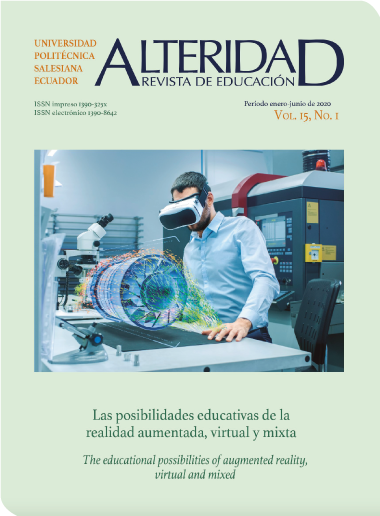Augmented Reality in Primary Education since students’ visions
Main Article Content
Abstract
Working today with digital resources in the classroom is a reality without the possibility of questioning. In this sense, the incorporation of tools such as Augmented Reality (from now on AR) are reflecting a new way of seeing and understanding the teaching and learning process. Its use for curriculum development is very diverse as well as the different ways of incorporating them, depending on the perspective that teachers have of it. In this sense, this article presents the vision that a group of pre service teachers have of AR in Primary Education. Thus, by using an ex post facto design, by the collection the dates a questionnaire with 30 items has been created, distributed in 6 dimensions, using a Likert type response scale of 5 options. The sample has been composed of N=520 students from the University of Córdoba. The main objective of the research has been: to evaluate the possibilities and potentials offered by different software used for the creation of technological environments under the AR architecture to be used in university formative contexts. The main result achieved reflects the non-existence of differences around the perception that teachers have of the RA in the field of primary education that this is a difficult-to-use tool with students with specific educational support needs and that once dominated would be easy to be incorporated into your teaching action.
Article Details
Section
Central Theme
Authorship: The list of authors signing must include only those people who have contributed intellectually to the development of the work. Collaboration in the collection of data is not, by itself, a sufficient criterion of authorship. "Alteridad" declines any responsibility for possible conflicts arising from the authorship of the works that are published.
Copyright: The Salesian Polytechnic University preserves the copyrights of the published articles, and favors and allows their reuse under the Creative Commons Attribution-NonCommercial-ShareAlike 3.0 Ecuador license. They may be copied, used, disseminated, transmitted and publicly displayed, provided that: i) the authorship and the original source of their publication (journal, editorial and work URL) are cited; (Ii) are not used for commercial purposes; Iii) mention the existence and specifications of this license.
Copyright: The Salesian Polytechnic University preserves the copyrights of the published articles, and favors and allows their reuse under the Creative Commons Attribution-NonCommercial-ShareAlike 3.0 Ecuador license. They may be copied, used, disseminated, transmitted and publicly displayed, provided that: i) the authorship and the original source of their publication (journal, editorial and work URL) are cited; (Ii) are not used for commercial purposes; Iii) mention the existence and specifications of this license.

